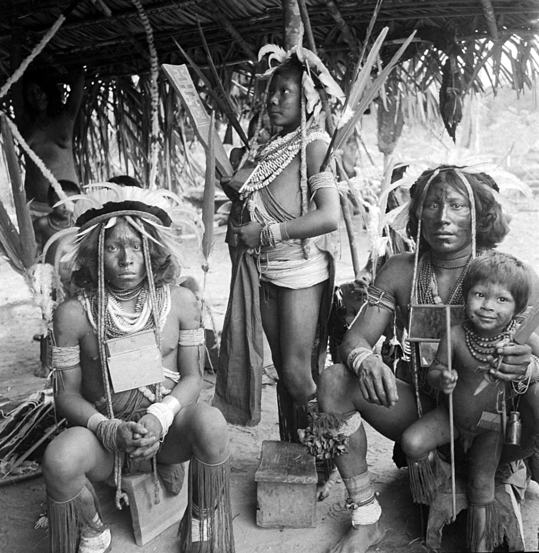WAYANA

A Brief History
According to both oral tradition and descriptions by 20th century European explorers, the Wayana emerged fairly recently as a distinctive group; contemporary Wayana are considered an amalgation of smaller ethnic groups such as the Upului, Opagwana, and Kukuyana. In the eighteenth century, the ancestors of the Wayana lived along the Paru and Jari rivers in contemporary Brazil, and along the upper tributaries of the Oyapock river, which nowadays forms the border between French Guiana and Brazil.
The first recorded mentioning of the tribe was in 1769 across a Wayana village. By the late 18th century, the ancestors of the Wayana were involved in an almost continuous military struggle with Tupi peoples such as the Wayampi, which drove them across the Tumuk Humak Mountains to the upper tributaries of the Litani river. Around the same time, the Aluku maroons, who had fled plantations in Suriname, were driven up the Litani river by Dutch colonial forces aided by Ndyuka maroons, who had settled for peace with the colonial authorities in return for military assistance against “incursions” from new maroon groups. From that moment on, an intensive trade relationship developed between the Wayana and the Aluku, and both tribes often living together in the same villages. In 1815, the Aluku and Wayana became blood brothers.
Over time, the Wayana migrated with the Aluku further downstream the Litani and Lawa rivers to end up in their contemporary position. In 1865, the Ndyuka granman Alabi invited a Wayana group still living along the Paru river in Brazil to join them along the Tapanahony river in Suriname, probably inspired by the arrangement with the Wayana that the Aluku had. This particular group still lives in villages along the Tapanahony and Palumeu rivers.
Despite limited contacts with outsiders, imported diseases ravished the tribe in the early 20th century, and reduced the population to an estimated 500 to 600 people. From 1962 onward, American missionaries from the West-Indies Mission, who had previously worked with the Tiriyó, encouraged the population to concentrate in larger villages and provided access to health care, schooling, and to make it easier to convert the population. The French part of the interior used to be the Territory of Inini which allowed for an autonomous and self sufficient tribal system for the native population without clear borders. In 1968 the Wayana settlements in France became part of the Grand-Santi-Papaïchton community circle of French Guiana which became separate communes a year later. Along with the commune, came a government structure, and francisation. In the late 1980s, the Surinamese Interior War stopped development on the Suriname side and many fled to the French side of the border. The late 20th and early 21st century marked the beginning of (eco)tourism.
Talk to us
Have any questions about Apetina or the Kuluwayak Foundation? We are always open to talk about our people, our village and the tours we have compiled. Please reach out to us if you want to know more about us.
